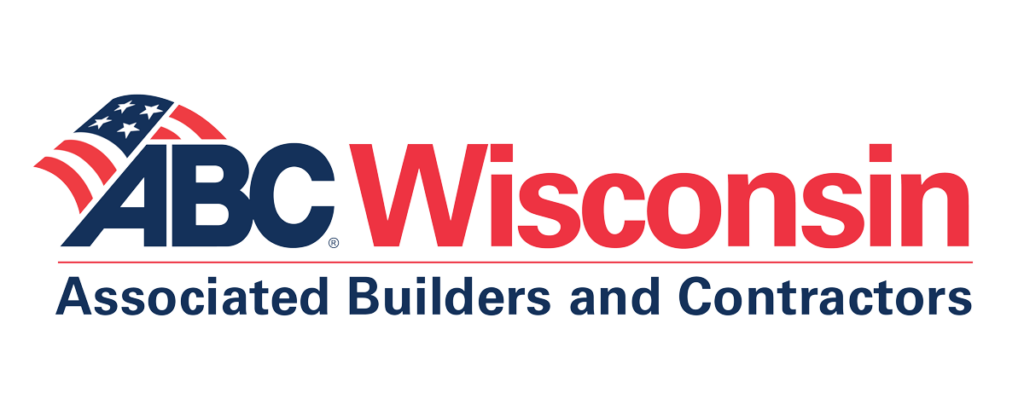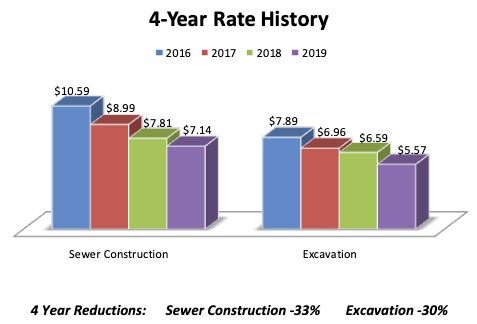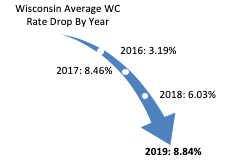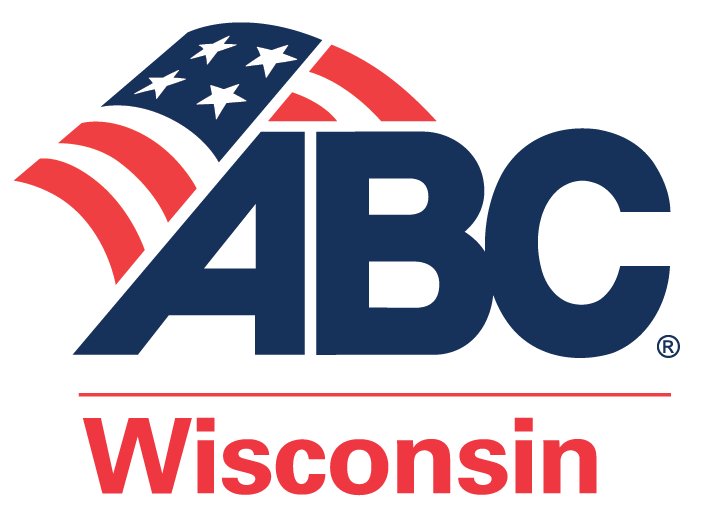The effect of four consecutive years of work comp rate reductions is a continued deterioration of insurance carrier profitability in writing this line of insurance, which will eventually lead to:
- Insurance carriers scaling back % of Dividend Offerings (an action that insurance carriers have historically been reluctant to take for fear of a loss of market share)
- Potential of reduced insurance carrier interest in writing WC coverage (especially standalone WC markets)
- Potential of rate increases in non-work comp coverage lines to support the overall account profitability
- Hardening of the insurance market, that already has been seen rate increases over the past few years in Business Auto and capacity limitations on Umbrella/Excess
& the Ugly —
Construction companies may be surprised to learn that significant WC rate reductions have an inflationary impact on the Experience Modification Rate (EMR).
It should be noted that this inflationary impact to the EMR will offset to some degree the premium reduction created by reduced WC rates.
Of the many variables that affect the EMR, the below example illustrates the inflationary pressure created by reducing WC rates:
- “Expected Losses” are the amount of losses that the State of Wisconsin expects to result from the state mandated work comp rate.
- As the state mandated work comp rates have reduced over the past 4 years (example: -33% in Sewer Construction), the “Expected Losses” that will result from the reduced WC rates also reduce.
- “Expected Losses” are compared to each construction company’s “Actual Losses” in the calculation of the EMR.
- The lowering of the “Expected Losses” through reduced WC rates when compared to the “Actual Losses” results in inflationary pressure to the EMR.
The only way to offset this inflationary pressure on the EMR is for contractors to reduce their “Actual Losses”.
Contractors familiar with competitively bidding on large projects know all-too-well the importance of having an Experience Modification Rate below 1.00. Most contractors have seen their EMR increase over the past several years, due in part to the last 4 years of WC rate reductions.
What can Contractors do?
Competitive pressure on insurance carriers
- Start the renewal process early (120 days prior to renewal)
- Evaluate insurance carriers:
- WC Dividends Plans
- Analysis of carriers coverage enhancements and/or restrictions
- Evaluation of Carrier Support Functions (Loss Control / Safety Services & Claims Service)
- Carrier dedication to the construction industry (Most national carriers have construction dedicated Underwriting / Loss Control / Claims functions)
Pre-Loss – Safety:
- Identify who is accountable at each jobsite for administering safety?
- Involve the insurance carrier and insurance broker to create an annual service plan addressing:
- Training (employees / supervisors & foremen / safety director)
- Jobsite inspections (Are we following our policies and documenting all inspections and corrective action?)
Post-Loss – Controlling Costs:
- Claims should be reported immediately
- Statistics confirm a direct correlation between immediate reporting of a WC claim and minimizing the cost of that WC claim
- Keeping WC claims “Medical Only”
- “Medical Only” claims (without Loss of Wages and or Disability) are discounted by 70% for the purpose of the impact on the EMF
- Partnering with an Occupational Medical Provider
- By having a medical provider familiar with your business, there tend to be fewer hang ups in getting employees to return to work as fast as possible
- Regularly scheduled mid-term and year-end claim reviews with broker and insurance carrier
Applying for available work comp credit programs:
- Wisconsin Contractors Premium Credit program (up to a 10% Premium Reduction that has no impact on the EMR)
- Wisconsin Apprentice Credit Program (up to $ 2,500)
NOTE: Some insurance brokers have dedicated construction divisions to serve the needs of Wisconsin’s construction industry.
To sum it up, while at first glance the continued workers’ compensation rate reduction that took effect on 10/01/19 may create the appearance of saving “A Fist Full of Dollars” on reduced WC premiums, in reality an objective evaluation would indicated that there is “The Good, the Bad & the Ugly.”














